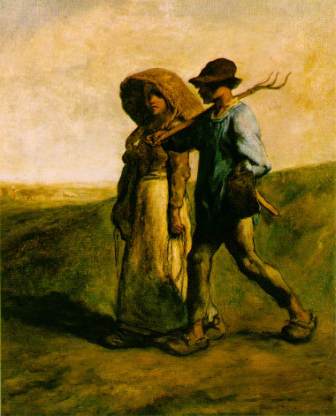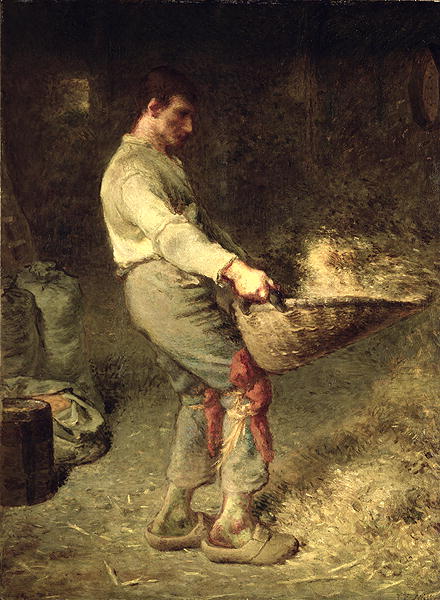-


 Jean F. Millet
Jean F. Millet
French
Artist
Jean Francois Millet was a French painter, etcher and draughtsman associated with the Barbizon school, his later works were criticized for expressing socialist ideas. Millet was noted for his depictions of peasant life. Jean Francois Millet can be categorized as part of the naturalism and realism movements.
Jean Francois Millet was born on a farm near Cherbourg and never forgot that he had spent his boyhood working in his father's fields. He showed an early talent for drawing and was sent to study with a painter in Cherbourg when he was 20 years of age. In 1837 he received a scholarship to study in Paris, where he became a pupil in the studio of Paul Delaroche.
The inflexible training Jean Francois Millet received was too much for his temperament and he gave up formal study to work alone in the Louvre, where he admired the works of Mantegna, da Vinci, Giorgione, and Poussin.
For some years, Millet supported himself by painting portraits, pastoral subjects, and decorative panels. Fighting against great odds, and suffering a long period of extreme hardship, Millet exhibited at the Salon for the first time in 1840 and married two years later. During this period his main influences were Poussin and Eustache Le Sueur, and the type of work he produced consisted predominantly of mythological subjects or portraiture, at which he was especially adept. Jean Francois Millet became a member of the French Academy in 1847. In the following year, however, Jean Francois Millet discovered that his real vocation as an artist lay in painting the land that he could never abandon.
"One must be able to use the trivial to express the sublime-that is true power!"-Jean Francois Millet
Jean Francois Millet began to take his subjects from the rustic life of peasants and farm laborers. The first of a long series of rural paintings, The Winnower brought him his first success and the accusation of the critics of socialism. The painting (shown here) was praised by Théophile Gautier and bought by Alexandre Ledru-Rollin, the Minister of the Interior. In 1849, when a cholera epidemic broke out in Paris, Millet moved to Barbizon, in the forest of Fontainebleau, on the advice of the engraver Charles-Emile Jacque. Jean Francois Millet took a house near that of ed to this area as a subject for his work,
Jean Francois Millet was one of those who most clearly helped establish the Barbizon School. Jean Francois Millet remained at Barbizon for twenty-two years, painting landscapes and the rural scenes reminiscent of his childhood by which he is best known. These scenes are executed in a distinctively personal and realistic manner, and in a sober palette. The human forms are painted in a sculptural composition that is psychologically truthful, low-keyed, almost melancholy intone, and deeply emotional in feeling. His paintings on rural themes attracted growing acclaim and between 1858 and 1859 Millet painted the famous Angélus
Although towards the end of his life, when he started using a lighter palette and freer brushstrokes, Jean Francois Millet's work showed some affinities with Impressionism, his technique was never really close to theirs. Millet never painted out-of-doors, and he had only a limited awareness of tonal values, but his draftsmanship had a monumentality that appealed to artists such as Seurat and van Gogh, who was also enthralled by his subject-matter, with its social implications.